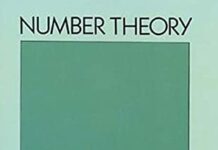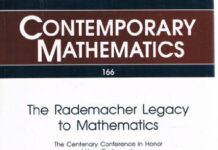
Ebook Info
- Published: 1998
- Number of pages: 272 pages
- Format: PDF
- File Size: 6.12 MB
- Authors: George E. Andrews
Description
This book develops the theory of partitions. Simply put, the partitions of a number are the ways of writing that number as sums of positive integers. For example, the five partitions of 4 are 4, 3+1, 2+2, 2+1+1, and 1+1+1+1. Surprisingly, such a simple matter requires some deep mathematics for its study. This book considers the many theoretical aspects of this subject, which have in turn recently found applications to statistical mechanics, computer science and other branches of mathematics. With minimal prerequisites, this book is suitable for students as well as researchers in combinatorics, analysis, and number theory.
User’s Reviews
Editorial Reviews: Review ‘A good introduction to a fascinating subject … a very pleasant book to read.’ Richard Askley, Bulletin of the AMS’There is no doubt that this book will continue to serve as a basic and indispensable source of information for everyone interested in this fascinating subject.’ European Mathematical Society Book Description Discusses mathematics related to partitions of numbers into sums of positive integers.
Keywords
Free Download The Theory of Partitions (Encyclopedia of Mathematics and its Applications, Series Number 2) in PDF format
The Theory of Partitions (Encyclopedia of Mathematics and its Applications, Series Number 2) PDF Free Download
Download The Theory of Partitions (Encyclopedia of Mathematics and its Applications, Series Number 2) 1998 PDF Free
The Theory of Partitions (Encyclopedia of Mathematics and its Applications, Series Number 2) 1998 PDF Free Download
Download The Theory of Partitions (Encyclopedia of Mathematics and its Applications, Series Number 2) PDF
Free Download Ebook The Theory of Partitions (Encyclopedia of Mathematics and its Applications, Series Number 2)





